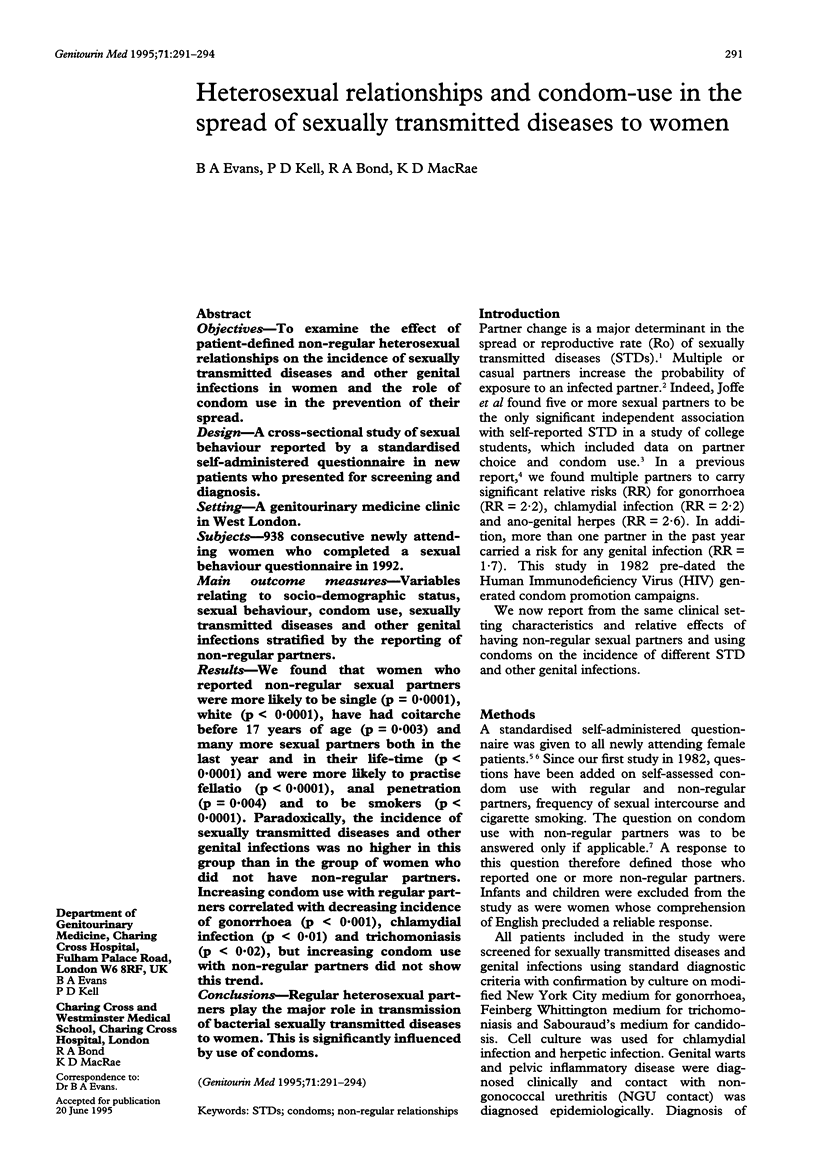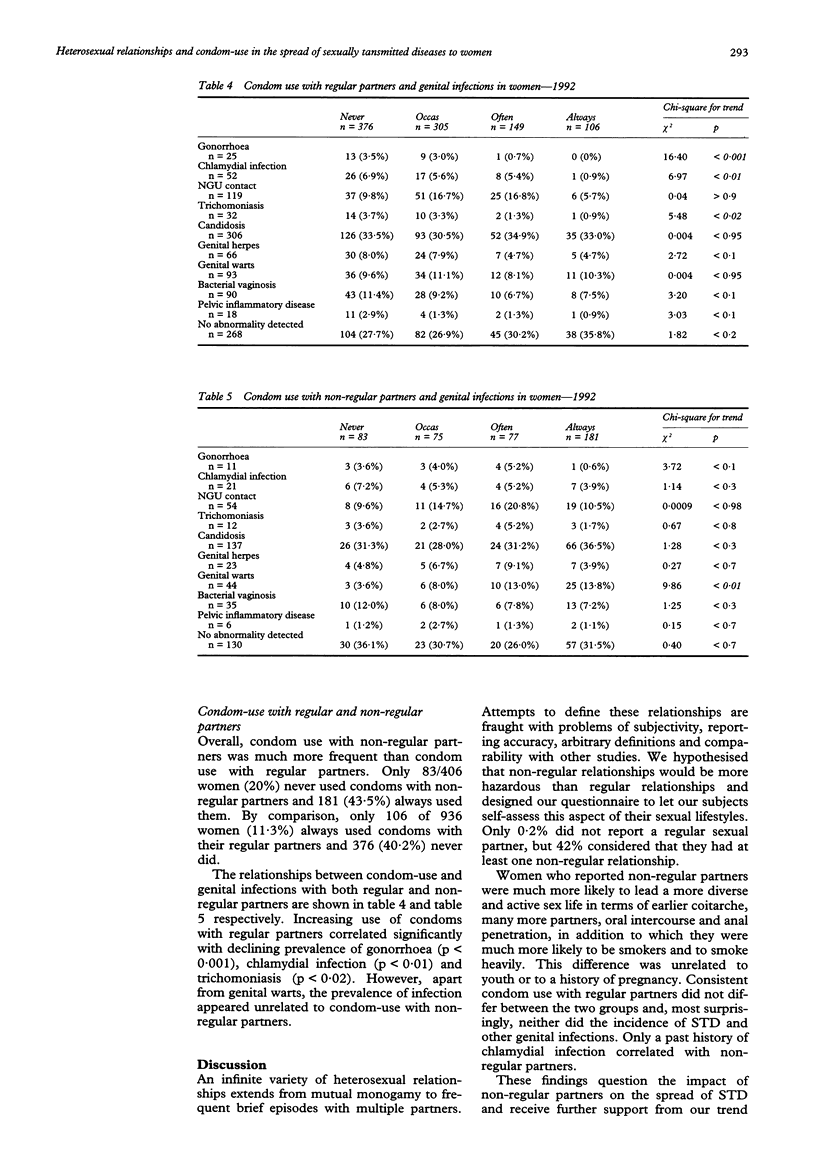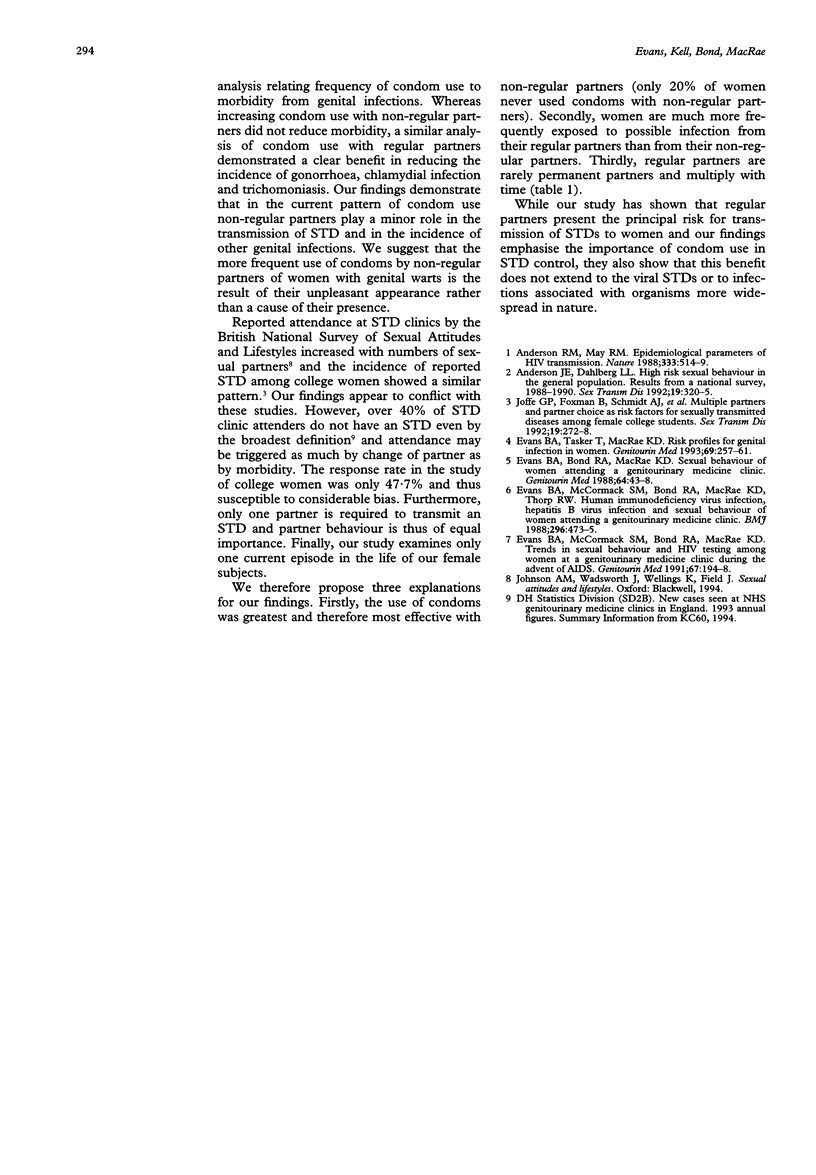Abstract
OBJECTIVES--To examine the effect of patient-defined non-regular heterosexual relationships on the incidence of sexually transmitted diseases and other genital infections in women and the role of condom use in the prevention of their spread. DESIGN--A cross-sectional study of sexual behaviour reported by a standardised self-administered questionnaire in new patients who presented for screening and diagnosis. SETTING--A genitourinary medicine clinic in West London. SUBJECTS--938 consecutive newly attending women who completed a sexual behaviour questionnaire in 1992. MAIN OUTCOME MEASURES--Variables relating to socio-demographic status, sexual behaviour, condom use, sexually transmitted diseases and other genital infections stratified by the reporting of non-regular partners. RESULTS--We found that women who reported non-regular sexual partners were more likely to be single (p = 0.0001), white (p < 0.0001), have had coitarche before 17 years of age (p = 0.003) and many more sexual partners both in the last year and in their life-time (p < 0.0001) and were more likely to practise fellatio (p < 0.0001), anal penetration (p = 0.004) and to be smokers (p < 0.0001). Paradoxically, the incidence of sexually transmitted diseases and other genital infections was no higher in this group than in the group of women who did not have non-regular partners. Increasing condom use with regular partners correlated with decreasing incidence of gonorrhoea (p < 0.001), chlamydial infection (p < 0.01) and trichomoniasis (p < 0.02), but increasing condom use with non-regular partners did not show this trend. CONCLUSIONS--Regular heterosexual partners play the major role in transmission of bacterial sexually transmitted diseases to women. This is significantly influenced by use of condoms.
Full text
PDF



Selected References
These references are in PubMed. This may not be the complete list of references from this article.
- Anderson J. E., Dahlberg L. L. High-risk sexual behavior in the general population. Results from a national survey, 1988-1990. Sex Transm Dis. 1992 Nov-Dec;19(6):320–325. [PubMed] [Google Scholar]
- Anderson R. M., May R. M. Epidemiological parameters of HIV transmission. Nature. 1988 Jun 9;333(6173):514–519. doi: 10.1038/333514a0. [DOI] [PubMed] [Google Scholar]
- Evans B. A., Bond R. A., Macrae K. D. Sexual behaviour in women attending a genitourinary medicine clinic. Genitourin Med. 1988 Feb;64(1):43–48. doi: 10.1136/sti.64.1.43. [DOI] [PMC free article] [PubMed] [Google Scholar]
- Evans B. A., McCormack S. M., Bond R. A., MacRae K. D., Thorp R. W. Human immunodeficiency virus infection, hepatitis B virus infection, and sexual behaviour of women attending a genitourinary medicine clinic. Br Med J (Clin Res Ed) 1988 Feb 13;296(6620):473–475. doi: 10.1136/bmj.296.6620.473. [DOI] [PMC free article] [PubMed] [Google Scholar]
- Evans B. A., McCormack S. M., Bond R. A., MacRae K. D. Trends in sexual behaviour and HIV testing among women presenting at a genitourinary medicine clinic during the advent of AIDS. Genitourin Med. 1991 Jun;67(3):194–198. doi: 10.1136/sti.67.3.194. [DOI] [PMC free article] [PubMed] [Google Scholar]
- Evans B. A., Tasker T., MacRae K. D. Risk profiles for genital infection in women. Genitourin Med. 1993 Aug;69(4):257–261. doi: 10.1136/sti.69.4.257. [DOI] [PMC free article] [PubMed] [Google Scholar]
- Joffe G. P., Foxman B., Schmidt A. J., Farris K. B., Carter R. J., Neumann S., Tolo K. A., Walters A. M. Multiple partners and partner choice as risk factors for sexually transmitted disease among female college students. Sex Transm Dis. 1992 Sep-Oct;19(5):272–278. doi: 10.1097/00007435-199209000-00006. [DOI] [PubMed] [Google Scholar]


